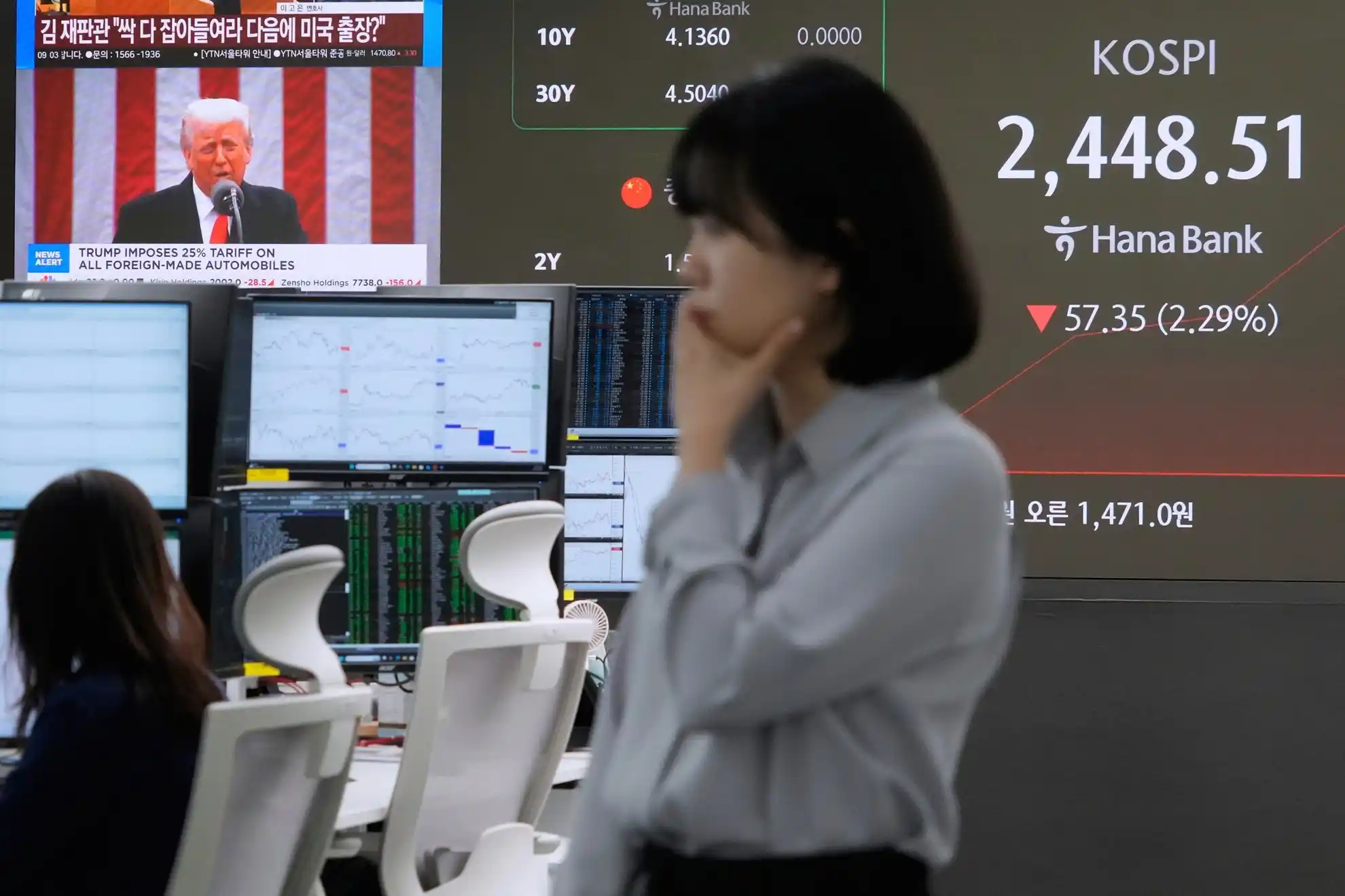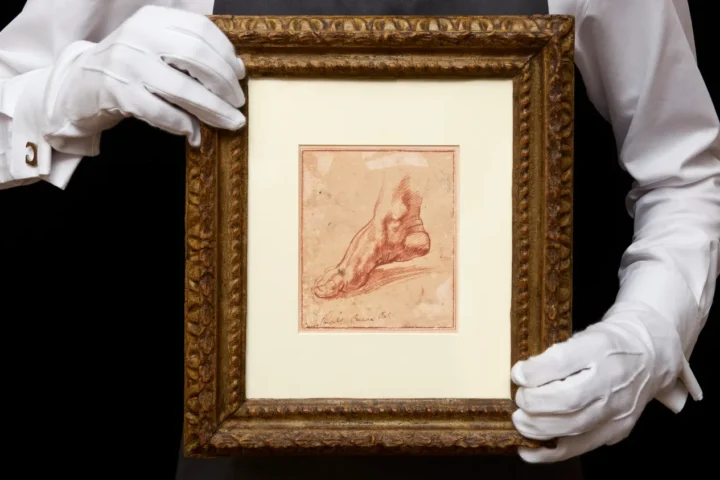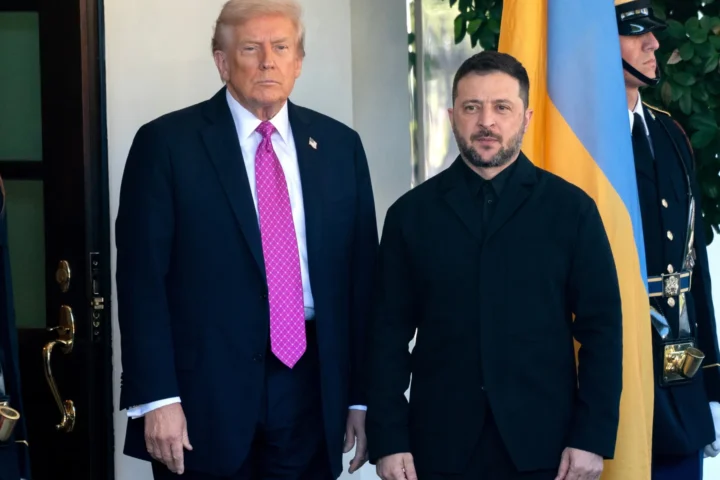Global financial markets plunged into turmoil once again after Donald Trump reaffirmed his commitment to ramping up tariffs on the United States’ major trading partners. Despite mounting concerns over a looming global recession, the president made his stance clear: “there’s no turning back.” The reaction was immediate — sharp market selloffs, falling bond yields, and a rush toward traditional safe-haven assets.
According to The Financial Times, futures for the S&P 500 dropped by 3.2%, while the tech-heavy Nasdaq slid 4.1%. Asian markets fared even worse: Hong Kong’s Hang Seng plummeted by over 10%. European markets opened the week deep in the red as well: the pan-European Stoxx Europe 600 fell by 6.2%, Germany’s DAX lost 10%, and the UK’s FTSE 100 dropped 5.6%.
This came as Goldman Sachs raised the probability of a U.S. recession from 35% to 45%, citing “a rapid tightening of financial conditions” triggered by the Trump administration’s new tariffs.
In a post on Truth Social, Trump once again pushed his trademark message:
“We have massive trade deficits with China, the EU, and many others. The only way to fix that is TARIFFS — which are already bringing tens of billions of dollars into the U.S. It’s beautiful and effective.”
When asked by reporters about the market crash, Trump replied in typical fashion:
“Sometimes you have to take the medicine to cure the disease.”
Just a week earlier — a day Trump himself called “liberation day” — the U.S. imposed more than 40% in tariffs on imports from key trading partners. In retaliation, Beijing announced its own set of tariffs at 34%. Within just two trading days, over $5 trillion in market value was wiped off the S&P 500 — the steepest loss since the COVID-19 crash in 2020.
Even Trump’s allies voiced concern. Billionaire investor Bill Ackman wrote on X that Trump’s actions risk creating an “economic nuclear winter” orchestrated by the U.S. itself. He also sharply criticized Commerce Secretary Howard Lutnick, accusing him of profiting off the collapse through his firm Cantor Fitzgerald, which holds yield-bearing debt instruments.
Another prominent investor, Stanley Druckenmiller, chimed in:
“I don’t support tariffs over 10%.”
Bond markets, long viewed as safe havens in times of crisis, benefited from the stock market panic. Yields on 10-year U.S. Treasuries fell by 0.08 percentage points to 3.91%. Similar movements were seen in Asia: yields on Japanese government bonds dropped to 1.11%, and Chinese government bonds fell to 1.64%.
“Investors are rapidly exiting positions amid extreme volatility,” Jason Lui of BNP Paribas told The Financial Times. He noted especially large outflows from Japanese banks and the financial sector, where foreign exposure is high.
The commodity market didn’t escape the turmoil either. WTI crude fell 3.4% to $59.80 per barrel, while Brent crude dropped by the same percentage to $63.35. Copper — a key barometer of economic health — slumped more than 7%, falling to $8,690 per ton. Even Bitcoin took a hit, down 0.8% to $78,198 per token.
On the currency front, the Japanese yen strengthened 0.8% to 145.6 per dollar. In contrast, the Chinese yuan hit its lowest level since December, trading at 7.19 per dollar. The U.S. dollar index slipped 0.3% against a basket of major currencies.
U.S. Treasury Secretary Scott Bessent tried to calm the markets during an interview with NBC, saying the reaction was “short-term” and that the administration would not reverse course. When asked whether the tariffs might be revisited, he stated:
“It depends on what other countries bring to the table. The question is: can they be trusted?”
Bottom line: The global economy stands at the edge of a new era of uncertainty, with Donald Trump still wielding tariff threats as a key weapon. Stock markets are falling, investors are spooked, and there’s an eerie sense of déjà vu — reminiscent of both 2018 and the early days of the pandemic. Only this time, the stakes may be even higher.
This article was prepared based on materials published by The Financial Times. The author does not claim authorship of the original text but presents their interpretation of the content for informational purposes.
The original article can be found at the following link: The Financial Times.
All rights to the original text belong to The Financial Times.





















